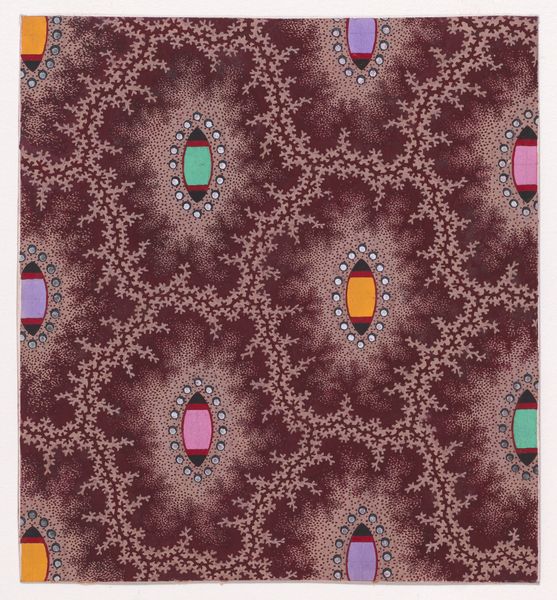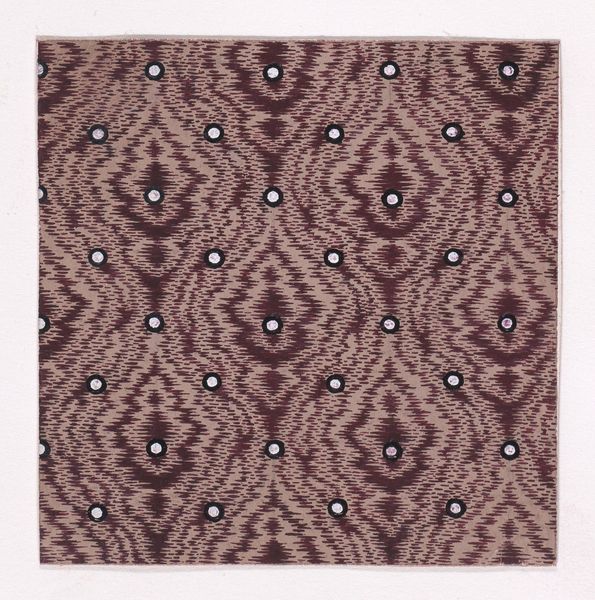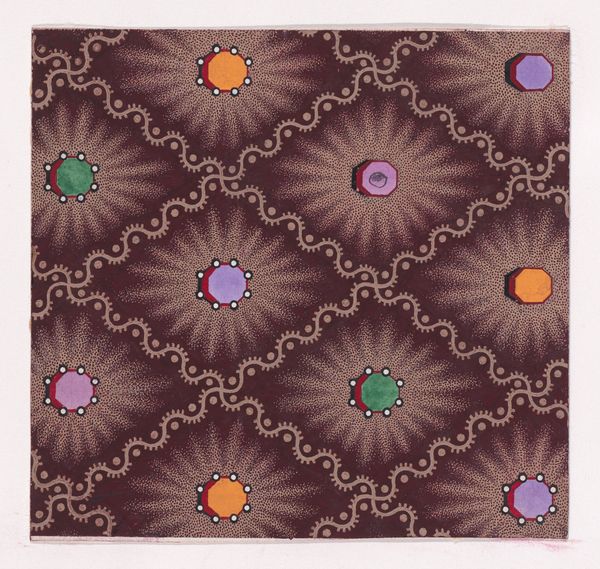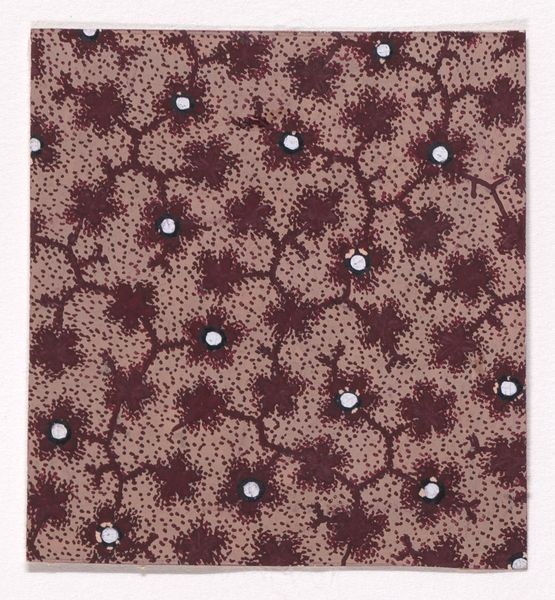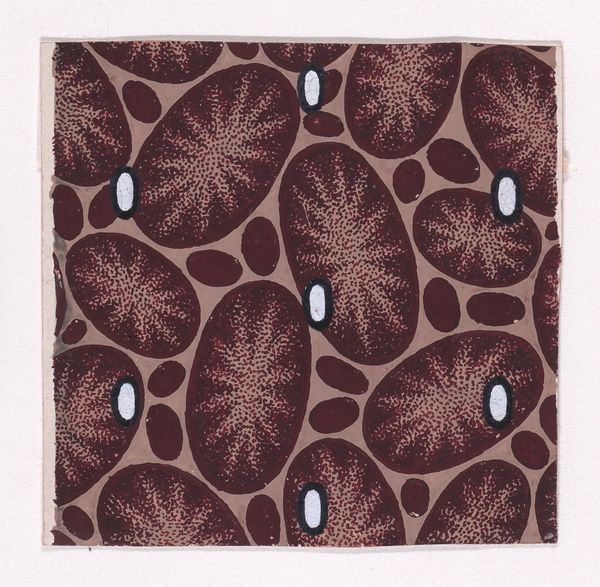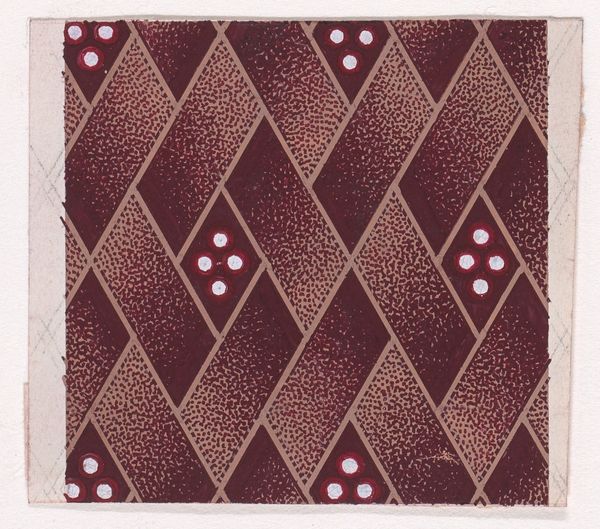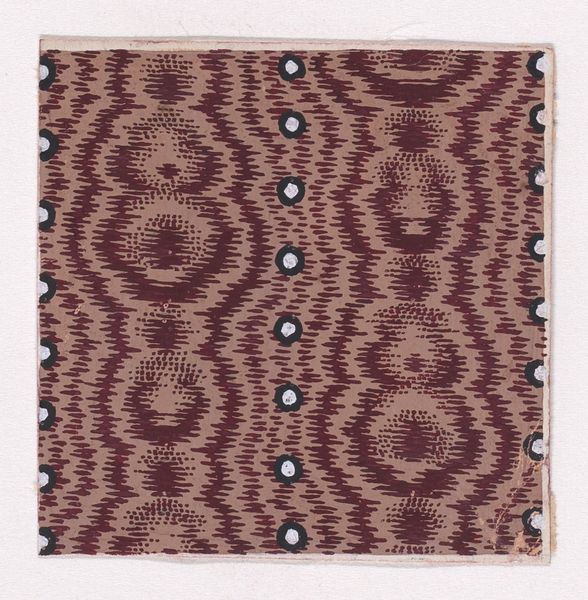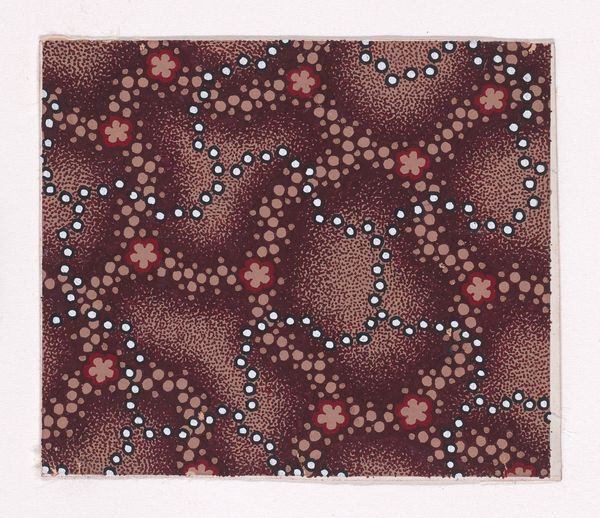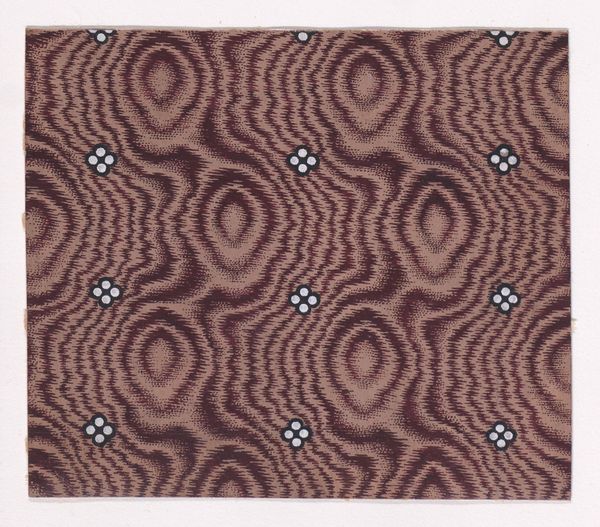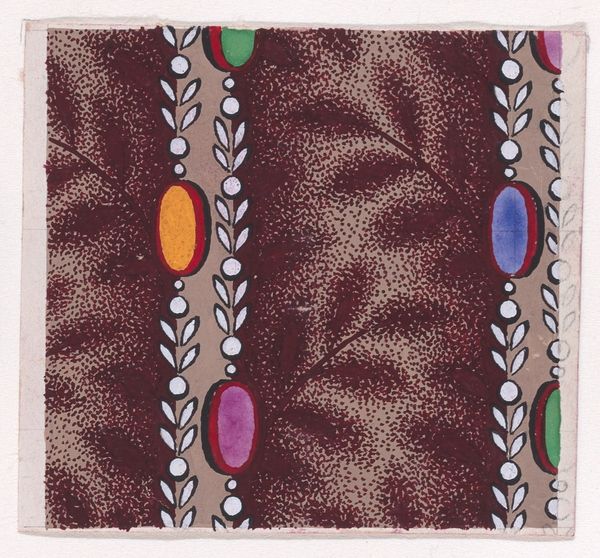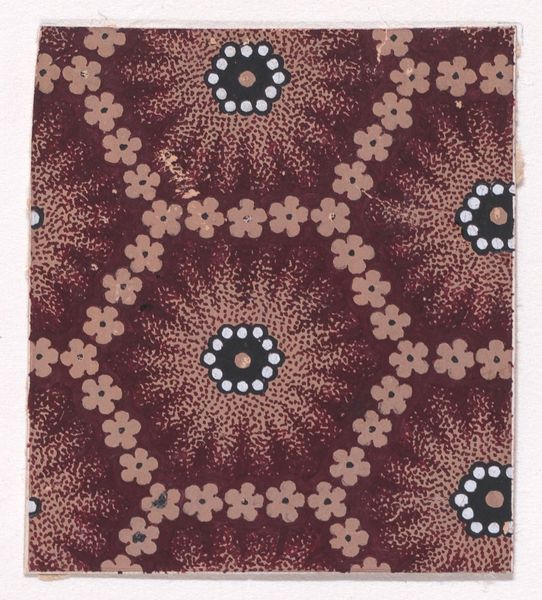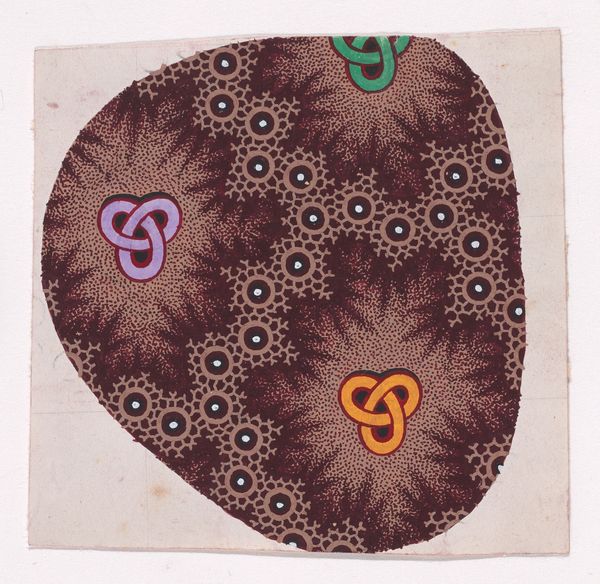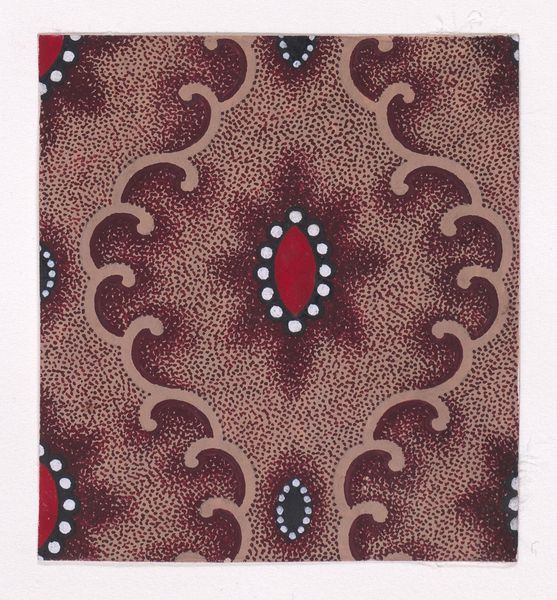
Textile Design with Trefoil Knots Framed by an Interlacing Honeycomb Pattern with Pearls 1840
0:00
0:00
print, textile
# print
#
textile
#
geometric pattern
#
geometric
#
decorative-art
Dimensions: Sheet: 5 1/16 × 4 15/16 in. (12.8 × 12.6 cm)
Copyright: Public Domain
Curator: This is a textile design from 1840. Its full title is "Textile Design with Trefoil Knots Framed by an Interlacing Honeycomb Pattern with Pearls." Currently, it resides here at the Metropolitan Museum of Art. Editor: The intricate detailing is mesmerizing! It almost vibrates with all the little dots that form that sort of starburst pattern. The isolated knots add focal points but the brown threatens to turn the whole thing to mud. Curator: Well, that's interesting. Considering this was created for textile production, that potential 'mud' you mentioned is likely intentional, a calculated part of the color scheme appropriate for the intended end product, such as a dress fabric or upholstery. The individual components, trefoil knots, the honeycombs, even what appear to be tiny pearls – their materials of origin were certainly considered during creation and eventual selection of dyes. Editor: Yes, I see what you mean. But focusing on the visual relationships— the geometry, the contrast of smooth knots against the busy honeycomb—it's clear someone thought about how the eye moves across the surface. The interplay between the organic look of the knots and that rigid honeycomb keeps it alive. The chromatic intensity certainly draws one in. Curator: Exactly, and don’t forget, creating these patterns was labor-intensive, with different processes and expertise required for dyeing and printing on textiles versus other methods. Were particular artisans prized or outsourced for their skill with the trefoil motif? How was quality regulated for mass production while preserving these visually complex elements? I bet these processes had bearing on this piece! Editor: Interesting perspective! While I focus on how those repeated shapes affect visual harmony and tension, you see the hidden world of production behind them! I’m caught by the overall composition; the textile, despite the complex elements, ends up visually pleasing! The interplay between each form produces a pleasing repetition. Curator: Absolutely! Investigating the means and context helps reveal just how the forms function beyond their aesthetic value. Considering it all allows one to reflect on the society of that time and maybe understand them, if only a bit, better. Editor: And by analyzing structure, form, color, and so on, we can see how such a process driven artwork also attains artistic achievement. Both our perspectives ultimately enrich its story.
Comments
No comments
Be the first to comment and join the conversation on the ultimate creative platform.
